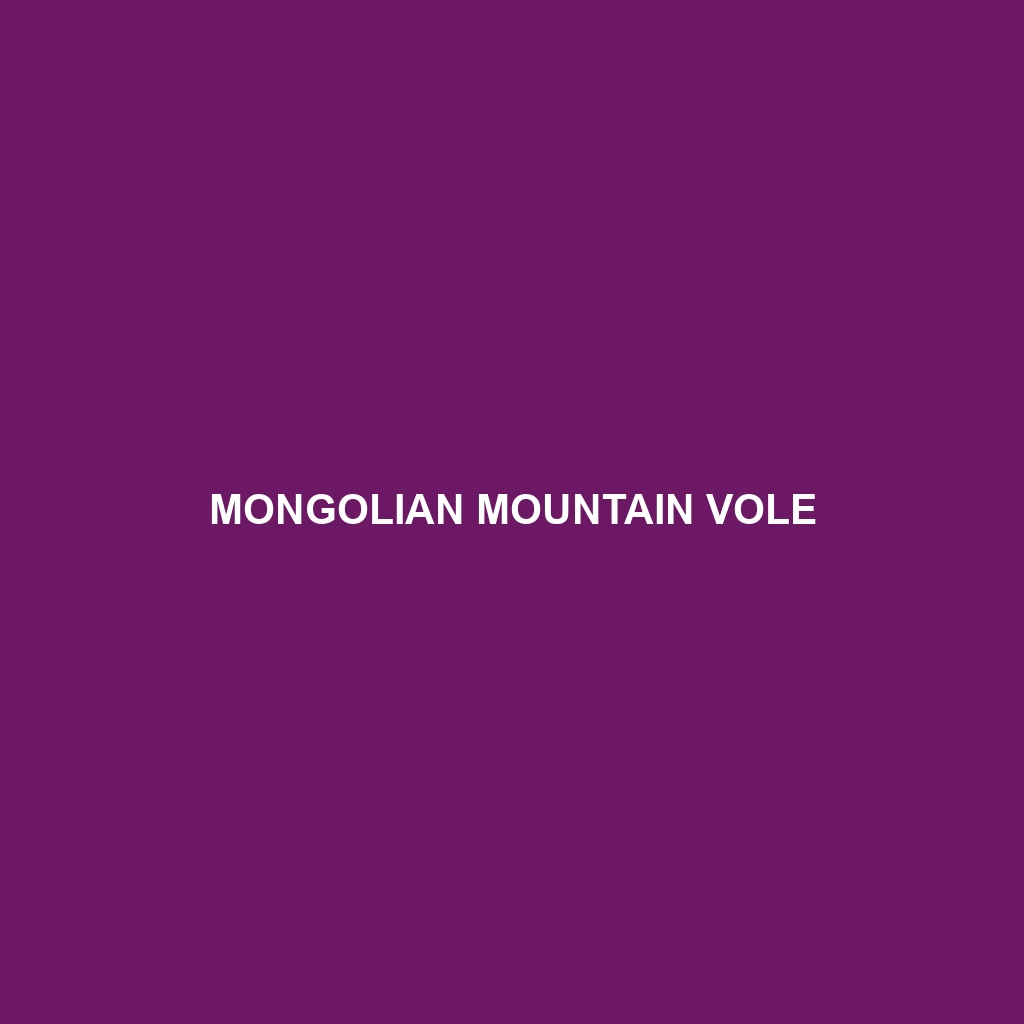Mongolian Mountain Vole
Common Name: Mongolian Mountain Vole
Scientific Name: Alticola semicanus
Habitat: The Mongolian Mountain Vole primarily inhabits the mountainous regions of Central Asia, particularly in Mongolia and parts of northern China. It can often be found in alpine meadows, rocky slopes, and grasslands where the elevation ranges from 1,500 to 3,000 meters. This species prefers areas with abundant vegetation, which provides shelter and food sources.
Physical Characteristics: The Mongolian Mountain Vole is a medium-sized rodent, measuring approximately 12 to 20 cm in body length with a tail about 4 to 8 cm long. It has a dense, soft fur that varies in color from grayish-brown to yellowish-brown. The vole has a robust, rounded body, short limbs, and a blunt snout, distinguishing it from other small mammals in its habitat. Its fur color helps it blend into the rocky terrain, providing camouflage from predators.
Behavior: Mongolian Mountain Voles are primarily diurnal, meaning they are most active during the day. They are known for their burrowing habits, creating extensive tunnels and nests underground, which serve as protection against harsh weather and predators. These voles exhibit social behaviors and can often be seen foraging in groups. Their communication includes various vocalizations and scent marking to delineate territories.
Diet: The diet of the Mongolian Mountain Vole consists mainly of grasses, herbs, and other vegetation found in their mountainous environment. They are primarily herbivorous and have adapted to consume a variety of plant materials, including roots and tubers during harsher seasons. Their feeding habits significantly contribute to seed dispersal within their habitat, impacting plant biodiversity.
Reproduction: The breeding season for the Mongolian Mountain Vole typically spans from late spring to early autumn. Females give birth to litters of 2 to 7 young after a gestation period of about 20 days. The young are altricial at birth, requiring considerable maternal care. They begin to leave the nest and forage independently at around three weeks old, dispersing from their birthplace to establish their own territories.
Conservation Status: Currently, the Mongolian Mountain Vole is classified as “Least Concern” by the IUCN Red List. However, habitat loss and environmental changes pose potential threats, making ongoing monitoring of their population and habitat critical. Conservation efforts are necessary to ensure their continued survival in the face of changing ecosystems.
Interesting Facts: The Mongolian Mountain Vole exhibits a unique adaptation to its environment; during the winter months, it enters a state of torpor to conserve energy. Furthermore, their extensive burrowing systems create microhabitats that benefit other species within the ecosystem, showcasing their ecological importance.
Role in Ecosystem: The Mongolian Mountain Vole plays a crucial role in its ecosystem as both a herbivore and a prey species. By feeding on vegetation, they help manage plant populations, and their burrowing activities enhance soil aeration and nutrient cycling. Additionally, they serve as a vital food source for various predators, including birds of prey and small carnivores, thus contributing to the overall food web dynamics.
